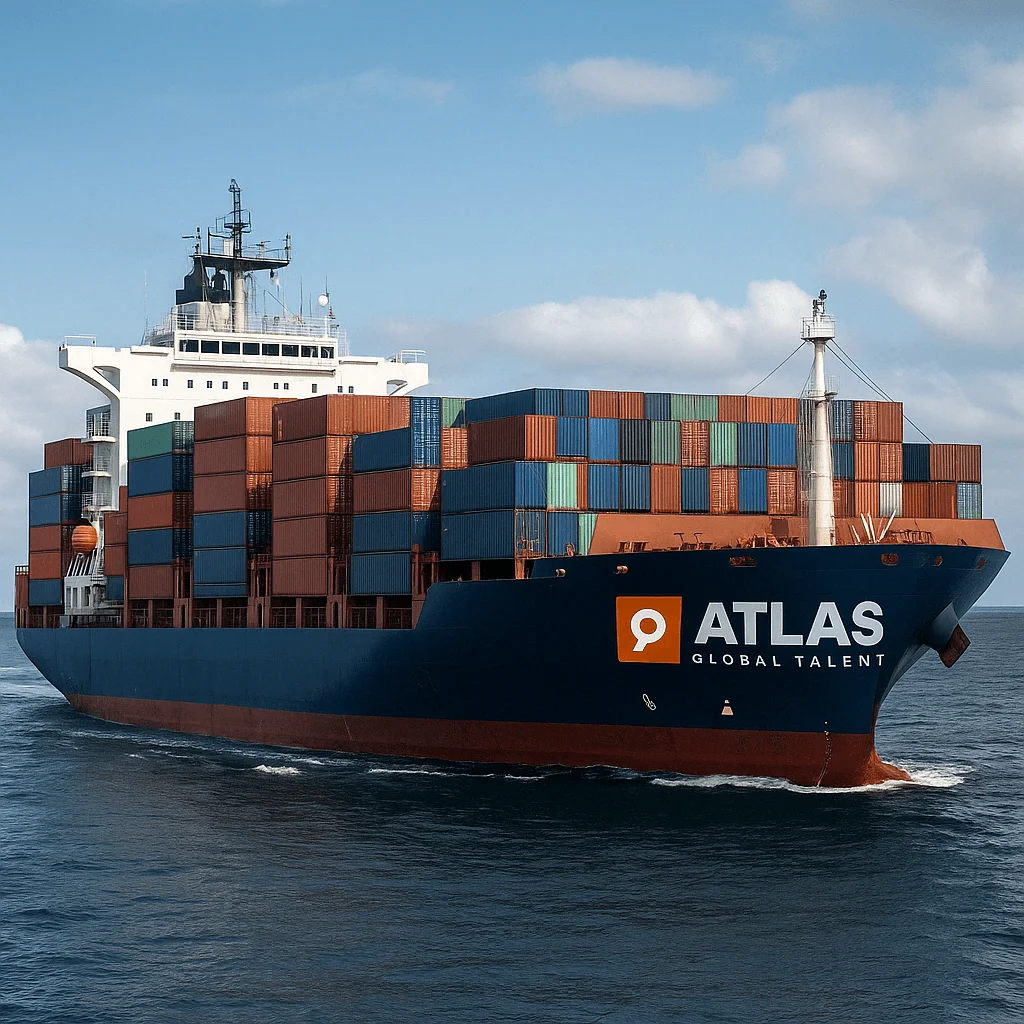Global Ocean Freight and Supply Chain Pressures
Wednesday, April 16, 2025

Other News
-
-
The Rise of Road Freight in Asia and What It Means for Recruitment
Wednesday, April 16, 2025
-
Air Freight in the USA and What It Means for Hiring
Wednesday, April 16, 2025
-
Growth in Freight Demand and Hiring Across Mexico City’s Expanding Logistics Sector
Wednesday, April 16, 2025
-
Montreal Freight Activity and the Demand for Skilled Sales Professionals
Wednesday, April 16, 2025
-
Freight Movement and Hiring Trends in the Atlanta Logistics Market
Wednesday, April 16, 2025
-
How to Recruit Top Logistics Sales Professionals in Los Angeles
Wednesday, April 16, 2025
-
Recruiting Logistics Sales Professionals in Chicago’s Competitive Market
Wednesday, April 16, 2025
-
Recruitment Struggles in the USA as Budgets Tighten and Confidence Wavers
Wednesday, April 16, 2025
-
UK and European Road Freight Trends and Challenges
Wednesday, April 16, 2025
-
Global Supply Chain Struggles and How Businesses Are Adapting
Wednesday, April 16, 2025
-
Logistics Business Development Recruitment in New York
Wednesday, April 16, 2025
-
Trump Tariff Causing Global Freight Disruptions
Wednesday, April 16, 2025
-
Transpacific Cargo Movements from the USA
Wednesday, April 16, 2025
-
Logistics Sales Recruitment in Florida
Wednesday, April 16, 2025
-
Strategies for a Changing Workforce
Wednesday, April 16, 2025
-
Why Contract Recruitment Is Gaining Ground in Logistics and Freight
Sunday, April 13, 2025
-
The Real Cost of a Bad Logistics Sales Hire
Friday, April 11, 2025
-
Why Freight Operations Managers Are in High Demand Globally
Tuesday, March 4, 2025
Freight Rates and Supply Chain Pressure
The global ocean freight industry has been under pressure as trade routes continue to shift and demand remains inconsistent. Shipping rates, while lower than pandemic-era peaks, remain unstable in many lanes. Disruptions in the Red Sea, congestion at ports, and equipment imbalances have all contributed to delays and increased costs. Carriers are adjusting schedules, blanking sailings, and repositioning vessels in an attempt to match fluctuating demand and maintain profitability.
One of the major challenges for shippers has been predictability. With port congestion and container availability still impacting lead times, companies are being forced to extend their planning horizons and build greater flexibility into their logistics strategies. This is particularly important for industries such as automotive, electronics, and retail, where delays can significantly impact margins and shelf availability.
At the same time, ongoing uncertainty in global demand—especially from key consumer markets in North America and Europe—is making it difficult for freight forwarders to lock in consistent capacity or pricing. Spot rates can still swing dramatically, and contract negotiations are becoming more complex as carriers seek more stability while shippers push for flexibility.
Port Capacity and Infrastructure Development
Many major global ports are investing heavily in infrastructure to keep up with volume surges. Ports in Asia, Europe, and the Americas are expanding container terminals, modernising handling equipment, and implementing smarter logistics platforms to improve turnaround times. These upgrades are essential as vessels become larger and cargo volumes continue to rebound from the shocks of recent years.
Despite this investment, the industry is still facing operational constraints. Labour shortages, limited warehousing space, and inland transportation delays are contributing to a ripple effect throughout the supply chain. Even when ships arrive on time, delays in unloading, customs clearance, or onward transport can still cause setbacks. This is pushing some companies to explore multi-port strategies and increase use of regional hubs.
There’s also growing attention on resilience and diversification. Businesses that once relied on one or two major gateway ports are now spreading their risk, looking to secondary ports and inland freight corridors to maintain flow even during disruption. The ability to pivot quickly and utilise alternative routes has become a critical strength in today’s ocean freight landscape.
Digital Tools and Workforce Needs
Technology is playing a bigger role than ever in ocean freight. Real-time visibility platforms, AI-powered forecasting tools, and automation in container handling are helping reduce friction and improve accuracy. Many shipping lines and freight forwarders have also adopted digital booking systems to streamline communication and reduce errors in documentation.
But technology alone isn’t enough. The sector is facing a serious talent gap, particularly in freight operations, documentation, customs brokerage, and supply chain analytics. As the pace of freight moves faster and becomes more data-driven, companies need people who understand the technology and know how to adapt quickly when the unexpected happens. This is especially true in roles that handle exceptions, resolve delays, or coordinate cross-border shipments.
Global ocean freight is no longer just about moving containers—it’s about managing risk, data, and partnerships at scale. Businesses that combine the right technology with experienced logistics professionals are better equipped to stay competitive, avoid bottlenecks, and protect their margins in an unpredictable environment.
At Atlas Global Talent, we partner with logistics and freight forwarding companies across the UK, Europe, USA, Canada, LATAM, and Asia. We help you find the operations managers, coordinators, customs specialists, and strategic planners that keep global freight moving. If you’re building a team to handle complex international movements, we’ll connect you with the people who get results.

